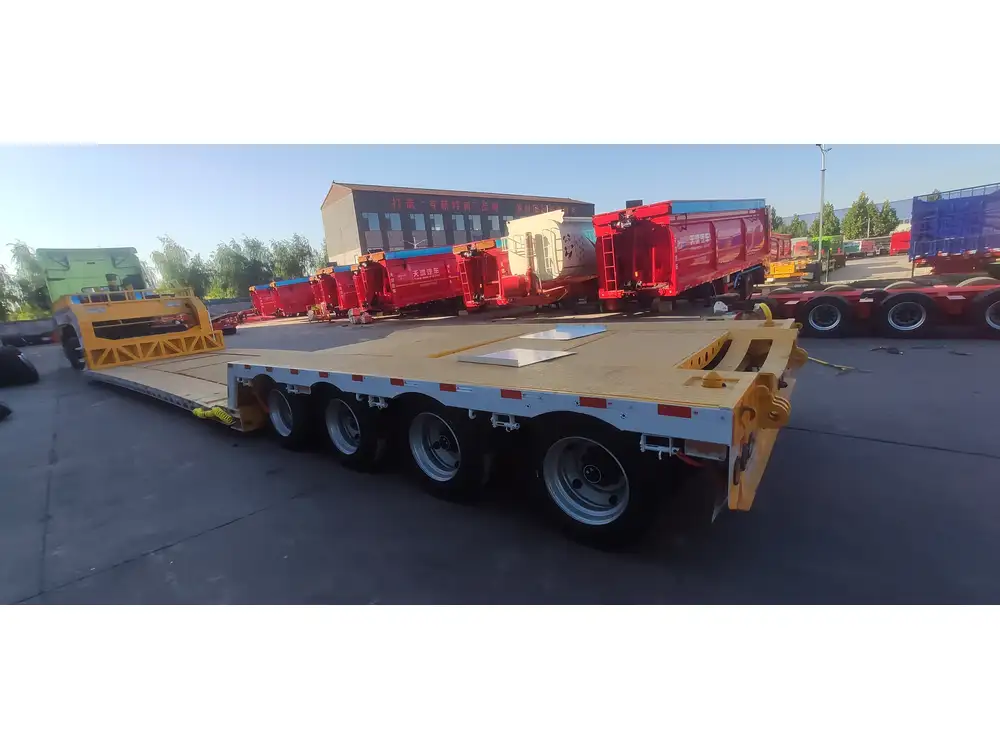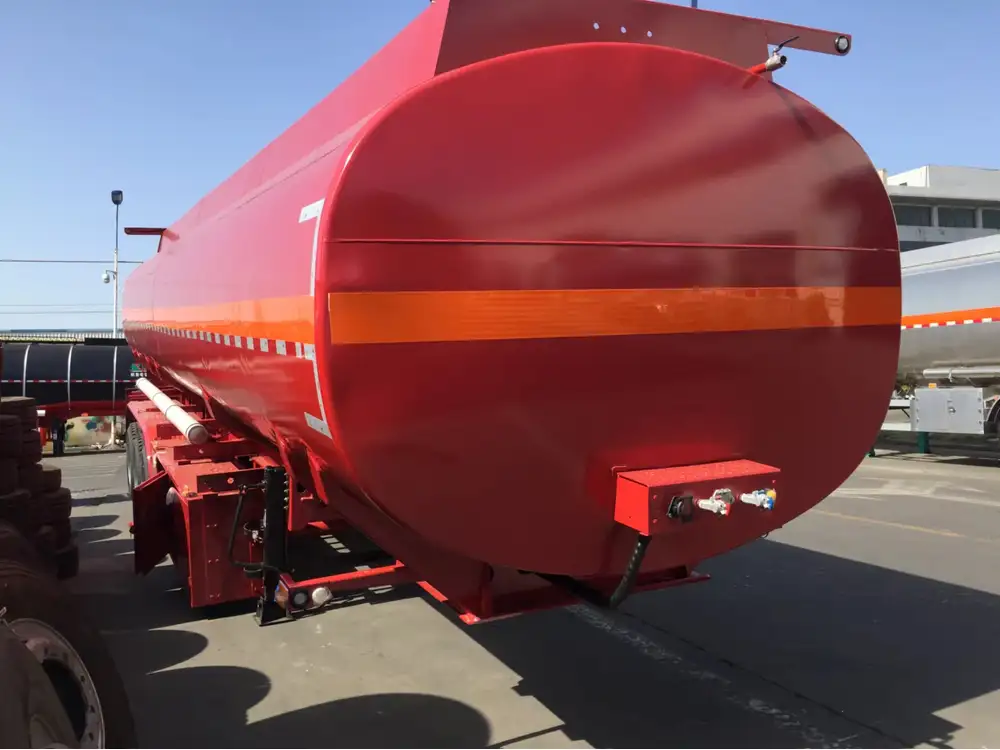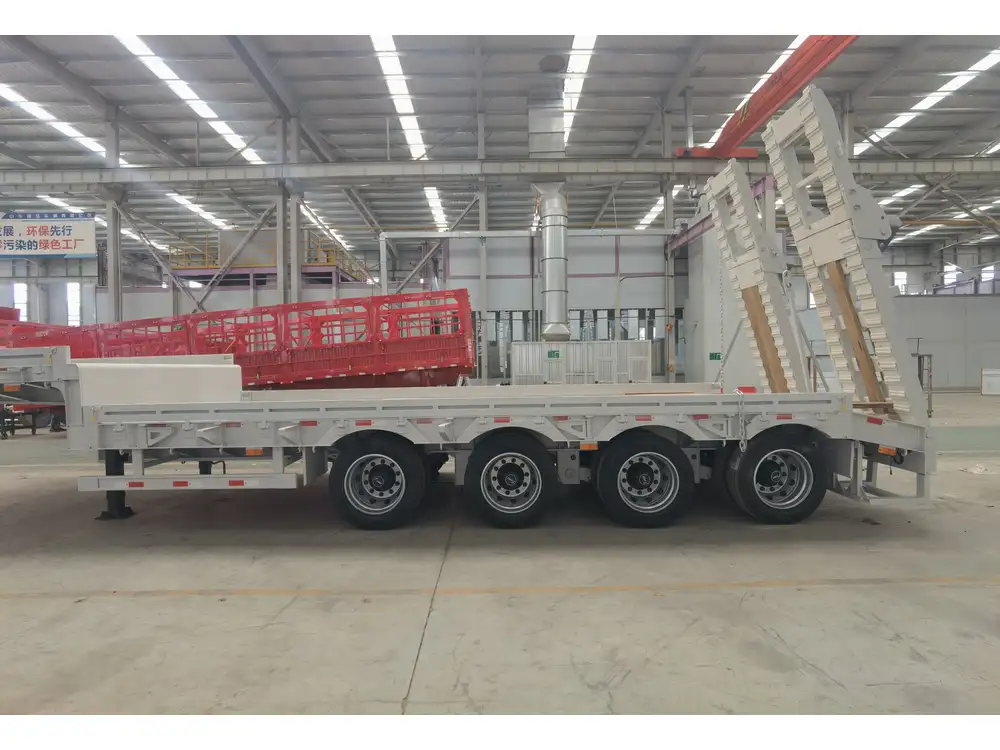Introduction
Winter brings with it a serene beauty, but for semi-trailer owners and operators, it also creates challenges, particularly the accumulation of snow and ice. Ensuring that trailers are free from winter’s icy grip is not just a matter of convenience, but it’s imperative for safety, efficiency, and the maintenance of equipment. This guide delves into effective snow removal techniques, tools, and safety practices specifically designed for semi-trailers.
Understanding the Risks of Snow Accumulation
1. Safety Hazards
Snow accumulation can obscure visibility, creating dangerous driving conditions. Ice falling from a trailer can endanger those below. Removing snow from a semi-trailer is not merely a cosmetic endeavor; it is crucial for the safety of the driver and everyone on the road.

2. Impact on Equipment
Excessive snow and ice can add significant weight to the semi-trailer, which in turn can affect handling and braking performance. Snow can also penetrate seals and crevices, leading to possible corroding and mechanical issues over time.
3. Legal Repercussions
Regulations in certain jurisdictions require operators to maintain their vehicles in a safe condition, which includes removing snow and ice buildup. Failure to comply can result in fines and legal liabilities.
Effective Methods for Snow Removal

1. Manual Snow Removal Techniques
Using a Snow Brush
| Tool | How to Use | Benefits |
|---|---|---|
| Snow Brush | Start from the top and work your way down. | Lightweight, easy to maneuver. |
A snow brush is an essential tool for snow removal. It allows operators to reach the top of the trailer with ease, eliminating accumulated snow before it can threaten safety.
- Extendable Reach: Many snow brushes come with extendable handles, allowing users to reach high areas without using a ladder.
- Non-Abrasive Material: Ensure the brush is made from soft materials to avoid scratching the surface of the trailer.
Scraping Ice
| Tool | How to Use | Benefits |
|---|---|---|
| Ice Scraper | Use with care to break ice from edges first. | Removes ice without damaging surfaces. |
Heavy ice can form on the trailer, particularly around hitches and doors. An ice scraper can effectively remove such buildup.
- Safety Precautions: Always wear appropriate gloves and eye protection when dealing with ice scraper tasks.

2. Snow Removal Equipment
Snow Blowers
For larger fleets or more significant snow accumulations, a snow blower can be invaluable.
| Feature | Description | Benefits |
|---|---|---|
| Power Source | Gas or electric options available. | Efficient for large areas. |
| Portability | Compact design allows for easy maneuvering. | Easy to store and transport. |
Snow blowers can quickly clear large patches of snow around and on semi-trailers, making them ideal for operations located in regions prone to heavy snowfall.
3. Chemical De-icing Solutions

Salt and Calcium Chloride
Using salt or calcium chloride can effectively melt snow and ice, making removal easier.
| Chemical | How to Use | Benefits |
|---|---|---|
| Rock Salt | Spread ahead of snowfall. | Cost-effective and readily available. |
| Calcium Chloride | Apply in icy conditions for quick melting. | More effective at lower temperatures. |
It’s crucial to understand the potential corrosive effects of these chemicals on trailer surfaces. A protective spray or layer can mitigate this risk.
4. Soaking Methods
Heated Water
In some cases, heated water can serve as a method of snow removal.
| Step | Description | Benefits |
|---|---|---|
| Equipment Needed | Hose, water source, heating device. | Fast melting of ice and snow. |
However, using heated water should be approached with caution; rapid temperature changes can cause stress fractures in certain materials.

Maintenance and Prevention Strategies
1. Protective Coatings
Applying protective coatings on trailers can reduce snow and ice accumulation, making snow removal easier.
| Coating Type | Benefits | Application Frequency |
|---|---|---|
| Wax-Based | Creates a slick surface to minimize buildup. | Every few weeks during winter months. |
| Specialty Sealants | Provides a long-lasting protective layer. | Annually pre-winter season. |
2. Regular Maintenance Checks
Consistent inspection and maintenance of trailers can prevent snow-related problems.
| Checklist Item | Frequency | Purpose |
|---|---|---|
| Inspection of Seals | Before winter season | Prevent moisture ingress. |
| Brake Systems | Monthly during winter | Ensure functionality amid snow. |

3. Parking and Storage Considerations
Choose parking locations wisely. If possible, park semi-trailers in sheltered areas to minimize exposure to snowfall.
- Consider using covers designed specifically for trailer protection against snow and ice.
Safety Precautions During Snow Removal
1. Personal Protective Equipment (PPE)
Always wear appropriate gear.
- Gloves: Insulated gloves should protect hands from cold and improve grip.
- Footwear: Non-slip boots are essential to avoid slips and falls on ice and snow.

2. Site Safety Assessment
Before commencing snow removal, assess the environment:
- Are there obstructions around the trailer?
- Is the ground stable and safe for movement?
3. Team Coordination
If multiple people are involved in snow removal, ensure communication protocols are clear.
- Use walkie-talkies or mobile phones to maintain contact.
- Designate roles to avoid accidents.
Troubleshooting Common Problems

1. Stubborn Ice Buildup
If ice proves difficult to remove:
- Reassess the methods: switch from manual tools to chemical solutions.
- Consider altering the angle of approach if using a scraping tool.
2. Snow Removal Equipment Malfunctions
If any equipment fails, follow a basic troubleshooting protocol:
- Check power sources or batteries.
- Inspect moving parts for blockages or wear.
3. Injury Prevention
Injuries can occur if processes are rushed.
- Take breaks to avoid fatigue.
- Rotate responsibilities among the team to distribute the physical workload evenly.

Conclusion
Efficient snow removal from semi-trailers is pivotal for securing the safety of drivers and vehicles alike. By being well-informed and utilizing the right tools and methods, both individuals and fleets can navigate the challenges of winter with ease and efficiency. We encourage you to implement these strategies and remain vigilant, ensuring optimal performance and safety throughout the inclement weather season.
By enhancing your knowledge and readiness for winter conditions, you can not only maintain operational efficiency but also safeguard your investments in semi-trailers against the unpredictable and often harsh conditions presented by snow and ice.



